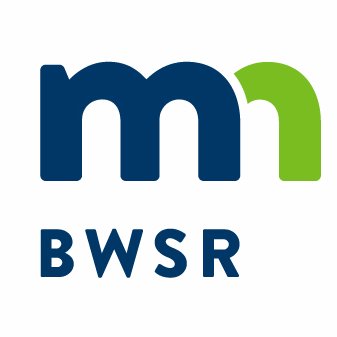Contact: Mary Juhl; mary.juhl@state.mn.us, 612-358-5733
ST. PAUL, Minn. — Minnesota has released a report on statewide Clean Water Fund initiatives that protect and restore drinking water sources, lakes, streams, and groundwater. The report, released every two years, is a joint effort between seven Minnesota water agencies that collaborate and coordinate their Clean Water Fund activities. Minnesota voters established the Clean Water Fund in 2008 through passage of the Clean Water Land and Legacy Amendment.
The report tracks water activities, trends, and outcomes across key initiatives and details investments in all watersheds and communities statewide. According to the report, each dollar in Clean Water Fund spending leveraged another $1.06 in additional funding between fiscal years 2010-2023, increasing the impact of state investments and accelerating water quality progress.
The report found that between 2010 and 2023, the Clean Water Fund:
- Was a major driver of improvements in phosphorus and sediment levels in lakes, rivers, and streams and provided needed investments to address rising nitrate and chloride levels in some regions of the state.
- Upgraded 52 municipal wastewater treatment facilities, reducing phosphorus discharges by 48%, over 316,000 pounds per year.
- Engaged 84,000 visitors to the We Are Water MN exhibits at 30 sites statewide since 2016, leading to new community partnerships and broader awareness of water issues.
- Developed plans to protect the drinking water sources of nearly 800 out of the approximately 970 community water systems in Minnesota and awarded approximately 1,300 grants that support protection for local drinking water sources.
- Certified nearly 1,000,000 acres of Minnesota farmland across more than 1,400 farms through the Minnesota Agricultural Water Quality Certification Program.
The Clean Water Fund provides supplemental funds for water quality improvements and protection for 25 years, which allows the state and its local partners to undertake complex, multi-year projects to achieve needed outcomes without interruption.
“There are many examples where making one-time structural changes on the land create a timely fix. However, to meet our goals we need to support and encourage Minnesotans to make changes that protect our waters, from how they apply de-icer on parking lots to how they fertilize their corn crop, and that takes time,” remarked Clean Water Council Administrator Paul Gardner.
The report includes stories about local water quality successes, voluntary projects, and partnerships made possible by the Clean Water Fund. “The fish are back, and that’s huge,” said West Polk Soil and Watershed Conservation District Manager Nicole Bernd, referencing a rock riffle project on the Sand Hill River. “We were able to restore the fish habitat, the fish life in that stretch of river.”
Glenn Hjelle, a Water Quality Certified farmer in Grant County, commented on gains achieved through agricultural practices supported by the Fund that reduce nutrient inputs to groundwater. “With the cover crops and reduced tillage alone, we have seen better yields during droughts and have reduced our waiting time to resume planting and harvesting after a heavy rain event.”
“Some of the biggest benefits to water quality come from voluntary actions, which is why it is essential that we invest in locally-led, long-term watershed plans and partnerships,” said John Jaschke, executive director of the Minnesota Board of Water and Soil Resources. “The Clean Water Fund is being used all across Minnesota to get the water quality improvements envisioned with passage of the constitutional amendment.”
The report also references the historic 50th anniversaries of federal enactment of the Clean Water Act and Safe Drinking Water Act, which underpin much of the state’s work to keep Minnesota’s waters swimmable, fishable, and drinkable.
Thirty-three percent of the sales tax revenue from the Clean Water Land and Legacy Amendment is allocated to the Clean Water Fund. The Amendment provides funding for Outdoor Heritage, Clean Water, Parks and Trails, and Arts and Cultural Heritage and is set to expire in 2034.

